Wordless books: how to step into the picture with your child
Published on: 26 October 2016 Author: Sita Brahmachari
You don't always need words to have fun with a book: explore Sita Brahmachari's creative ideas to let your imagination run wild.
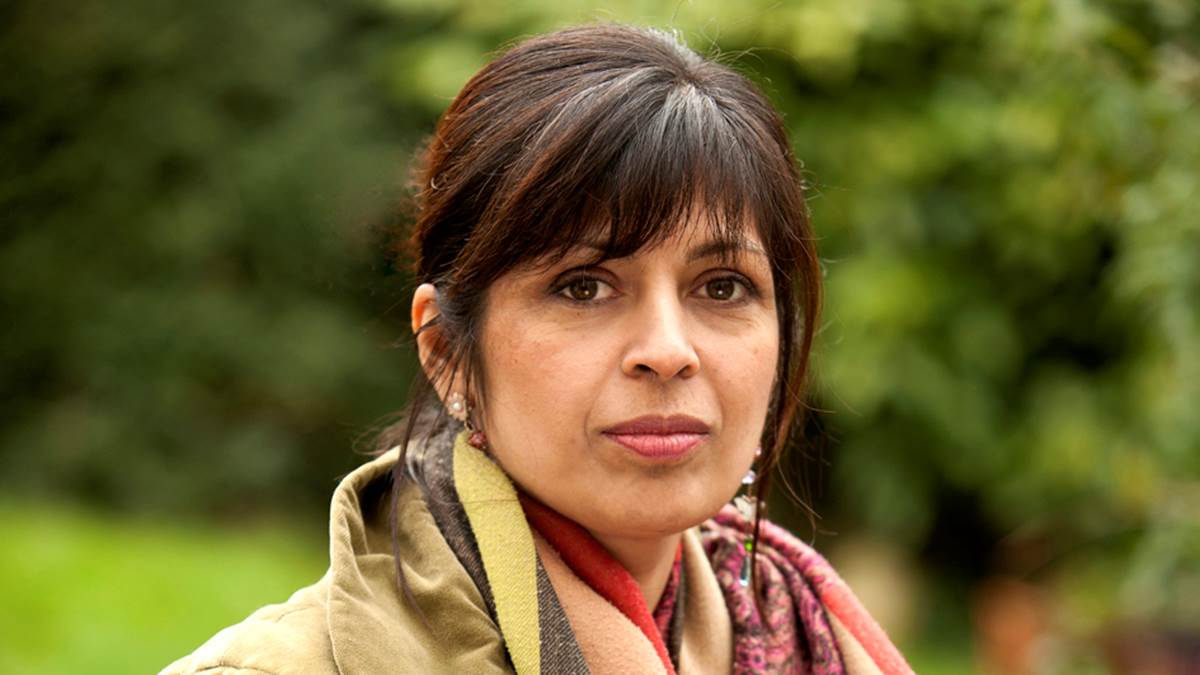
Reading picture novels is something both parent and child can engage in and share, whatever languages are spoken at home.
But precisely because of the endless possibilities they offer, I know that parents and carers can be unsure of how to enter the world of the picture novel with their children. Parents also might feel the pressure of teaching children to read as early as possible and worry that 'wordless picture books' will slow this journey down. Actually, I've found the opposite to be true.
Picture books hold the essential ingredients for your child to develop a love of books: the freedom to to explore the imagination, the power of empathy; and to think creatively and playfully. When we read picture books, we literally step inside the picture. The experience of reading picture novels makes children more fluent as communicators, storytellers, readers and writers.
How do I read a wordless picture book with my child?
The main things I've discovered about looking at wordless picture books together are:
- There are no right or wrong things to say. You won't ever 'get it wrong' when you're reading to or with your child.
- It's an opportunity to snuggle up together and delight in a book.
- You can talk to each other about what you think might be going on – exchange interpretations, make noises, sing songs, dance out the story, draw/paint your favourite images, laugh at the funny bits, and be silly.
- You are able to relate to your child's own life and gain insights into their world: their loves, dreams and worries. Do you go to a similar location? Are there footpath flowers on YOUR street? If you lost a favourite hat, who would help you find it? Talk about bits that connect with your child's own life.
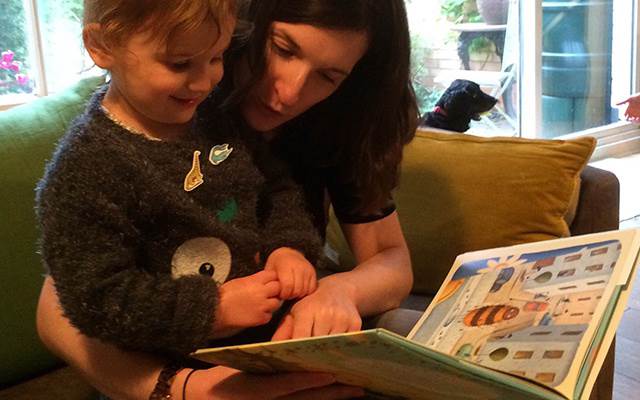
I asked my neighbour Sophie (aged 2) and her mum Rosi (also a primary school teacher) to join me in exploring three wonderful picture novels.
Of course, you could explore any of these books with older children, too - and in fact some of them would be more suitable for children at the older end of primary school.
Footpath Flowers by JonArno Lawson and Sydney Smith
IBBY Canada has donated this book to all refugee children. I can see why. It's a story that evokes huge empathy.
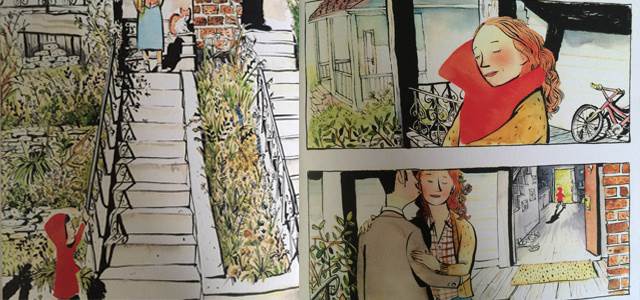
Rosi said:
'Sophie loved the girl's little red coat, making her very easy to identify in every panel. The notion of finding flowers (beauty) everywhere is something Sophie can relate to - I'm often asking her to stop picking flowers that are in other people's gardens! We talked about the dad being on the phone a lot, and that led into chatting about grown-ups and their phones.'
Activity
- Walk along a street together. Ask your child to try to remember all the things they notice (the smaller, the better): wild flowers, insects, the colour of a door, a child on a scooter, and so on.
- When you get home, draw your own doodle maps of what you remember seeing on the walk. Begin and end the map at your front door. Colour in the things you think were important in the story of your walk on the journey. Now compare maps!
- Read Footpath Flowers again and list how many things the girl in the red coat notices and cares about (that the dad on the phone doesn't).
Bee and Me by Alison Jay
When a poorly bee flies into a little girl's bedroom, it is the beginning of the most amazing adventure of discovery and friendship. The little girl nurtures the bee and she discovers how bees nurture our world. I found the beautiful colourful illustrations so touching and loved some of the bee's eye views of the city. This book was recently nominated for a CILIP Carnegie and Kate Greenaway Medals.
Rosi says:
Hands down, this was Sophie's favourite book!
This is a bit of Sophie's favourite page:
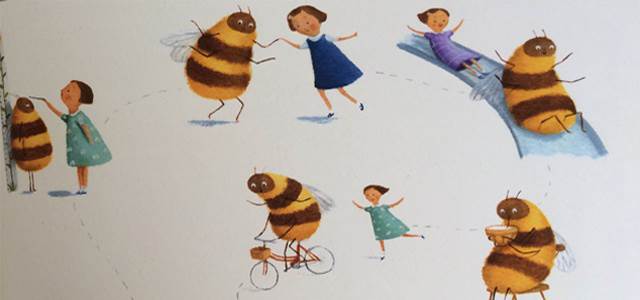
Sophie said:
They're playing, now she's measuring him (the bee). The bee drinks lots of sugar water.
Activity
- Make an audiobook of your child reading. I can imagine a young child telling this story so beautifully. If they are willing, record them telling the story of Bee and Me. I wish I had recorded my children reading and making up stories when they were little. They got so animated!
- Planting seed. In the back of the book, there is a page telling readers which flowers, herbs and weeds are good to attract bees. Either visit a garden and find some of these plants (and hopefully a bee or two) or, if you have a windowsill or a piece of ground to plant in, sow some seeds, then watch them grow and the bees arrive.
The Arrival by Shaun Tan
This is one of the most precious books on my shelf. It's an epic and timeless tale of the struggles of all people who leave their homelands and have to begin life in a new country. Read this book yourself and then share some or all of it with your children as they grow up. Mine began reading it around ten years old.
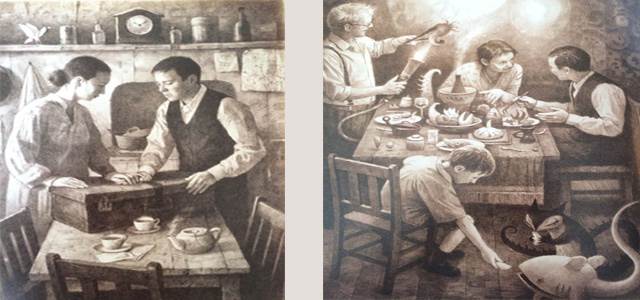
Activity
- Pack a suitcase: if you were going on a journey to a faraway land, talk about which special objects you'd take with you. Some of these objects could be practical, and some symbolic, like the paper bird in Tan's story.
- Draw your suitcase and objects
- Make your own travel tag, with your destination on it
- Where are you going?
- Why are you leaving?
- Doodle a map of where you are travelling from and where you are travelling to
- Draw a companion to travel with you
- Start telling and/or writing your Arrival story
- Make a paper bird: as you go through the story, write on your bird all the things you think it symbolises in the story.
- Follow the alien: read through the book and follow the alien creature. Give it a voice. Give it words.





